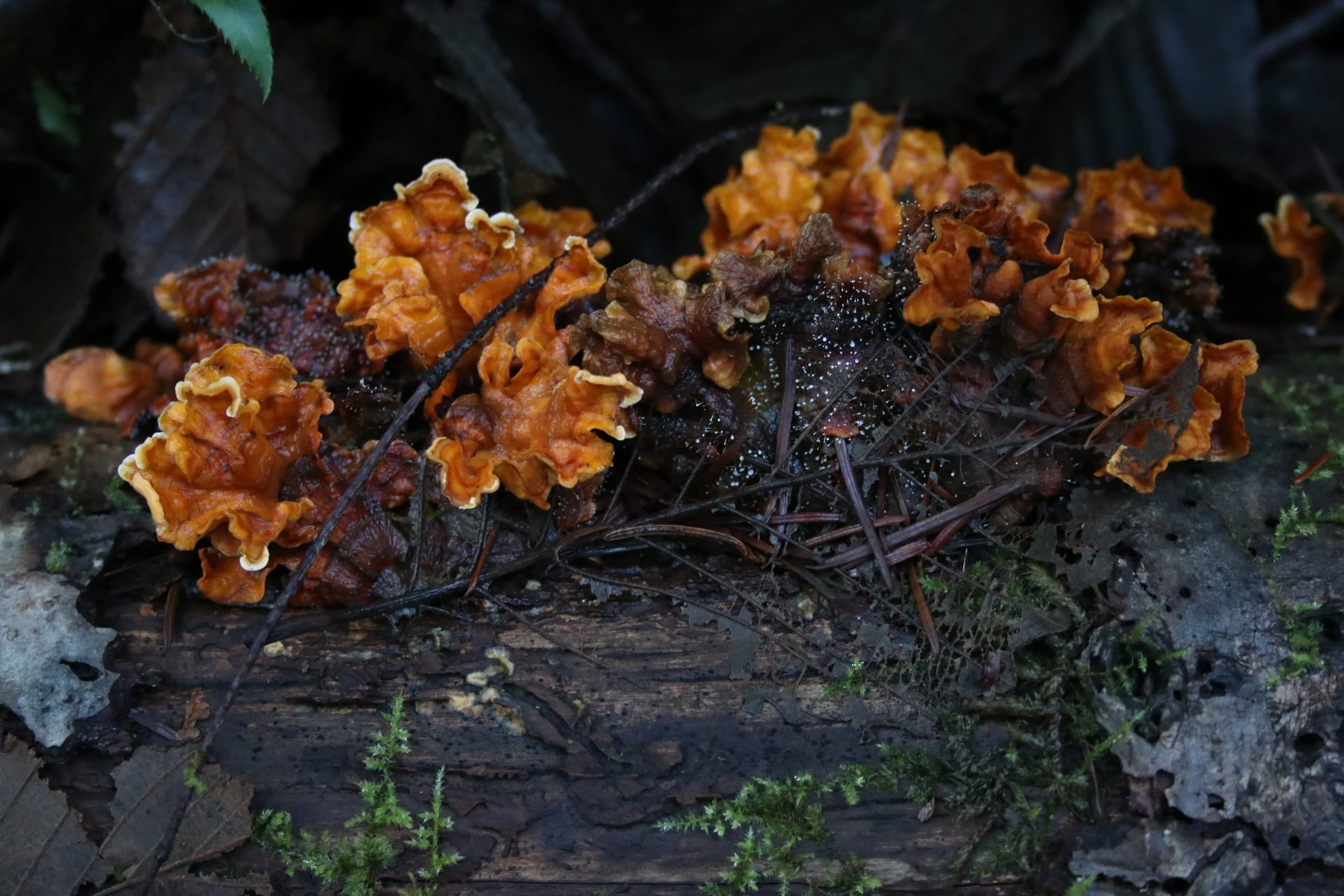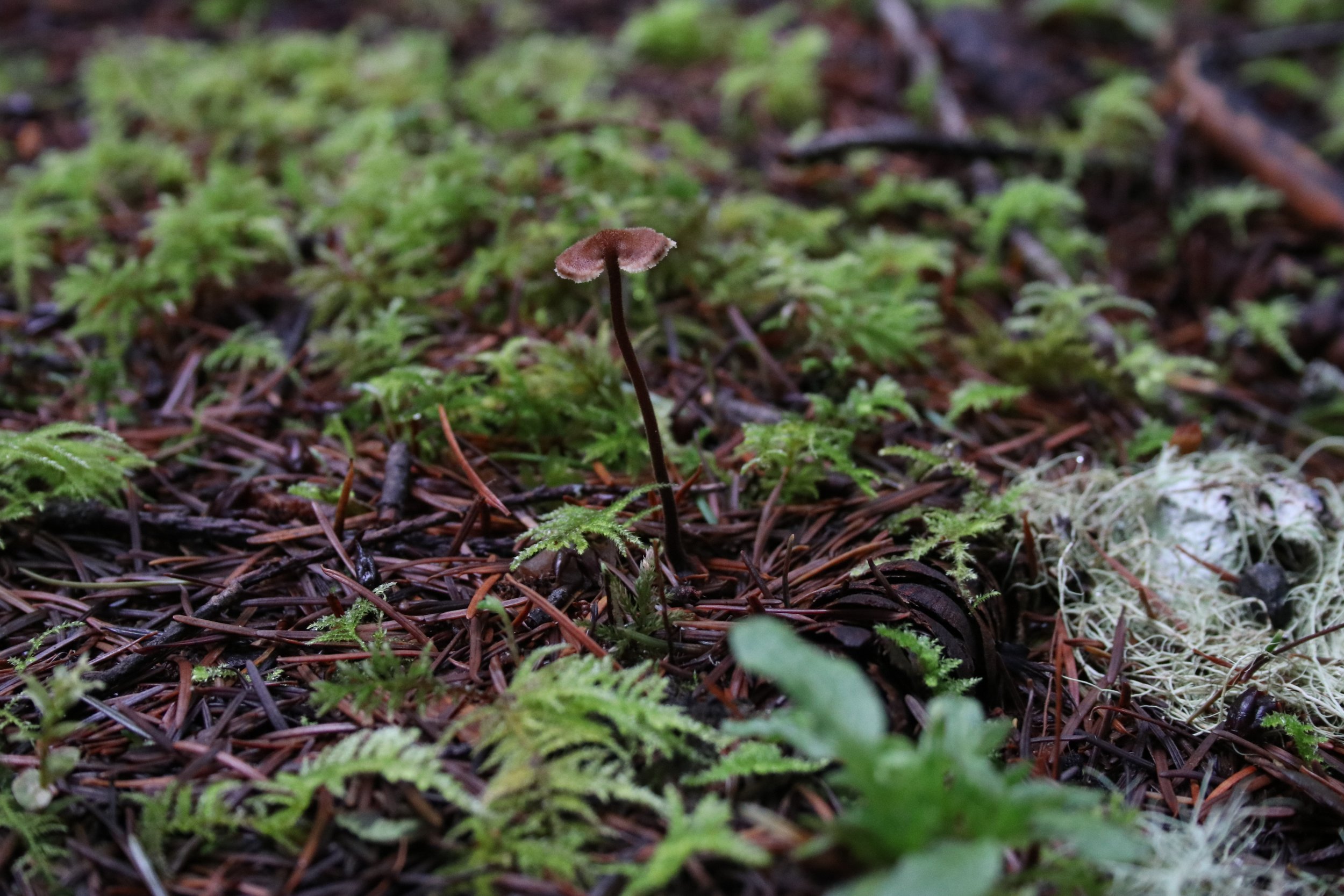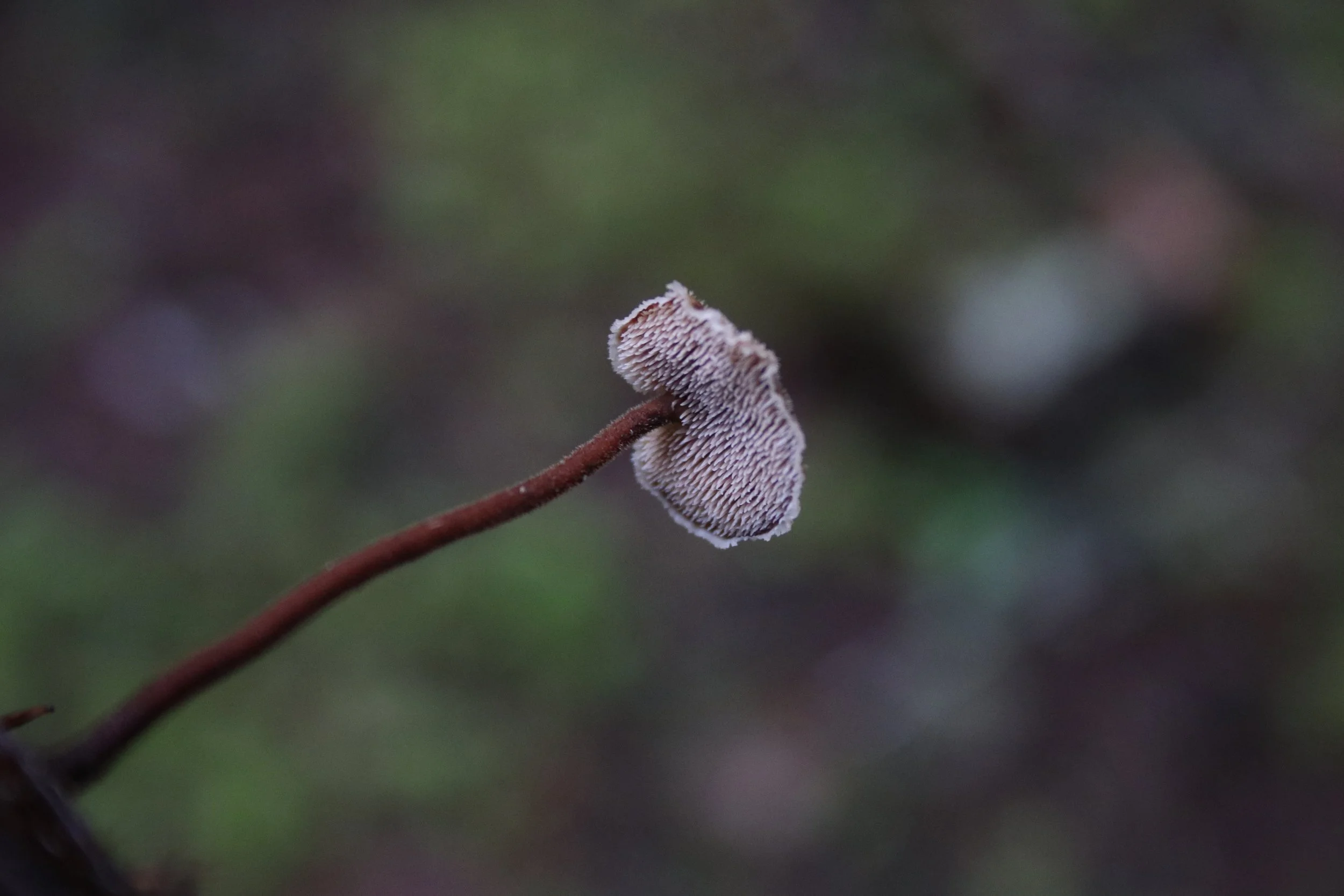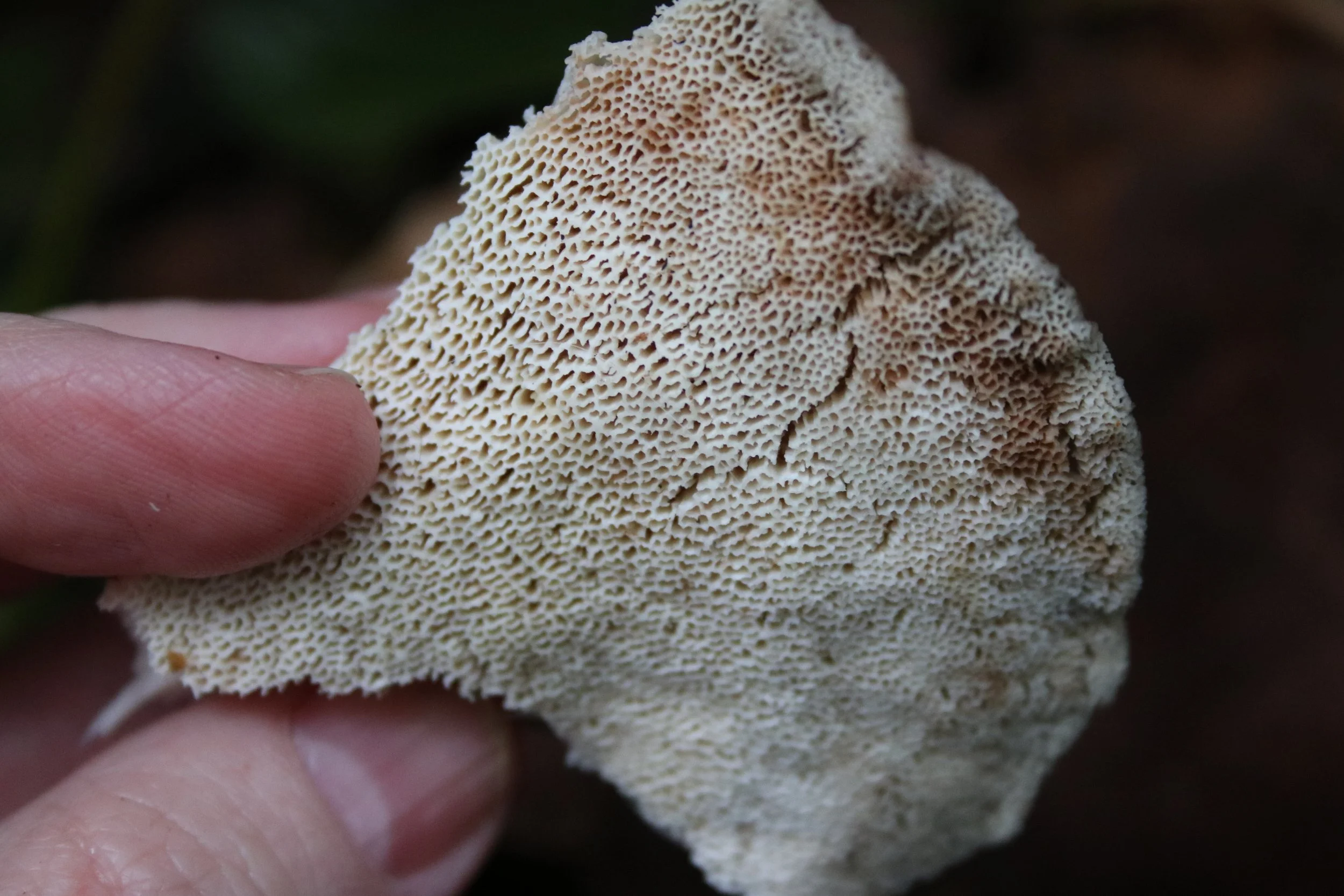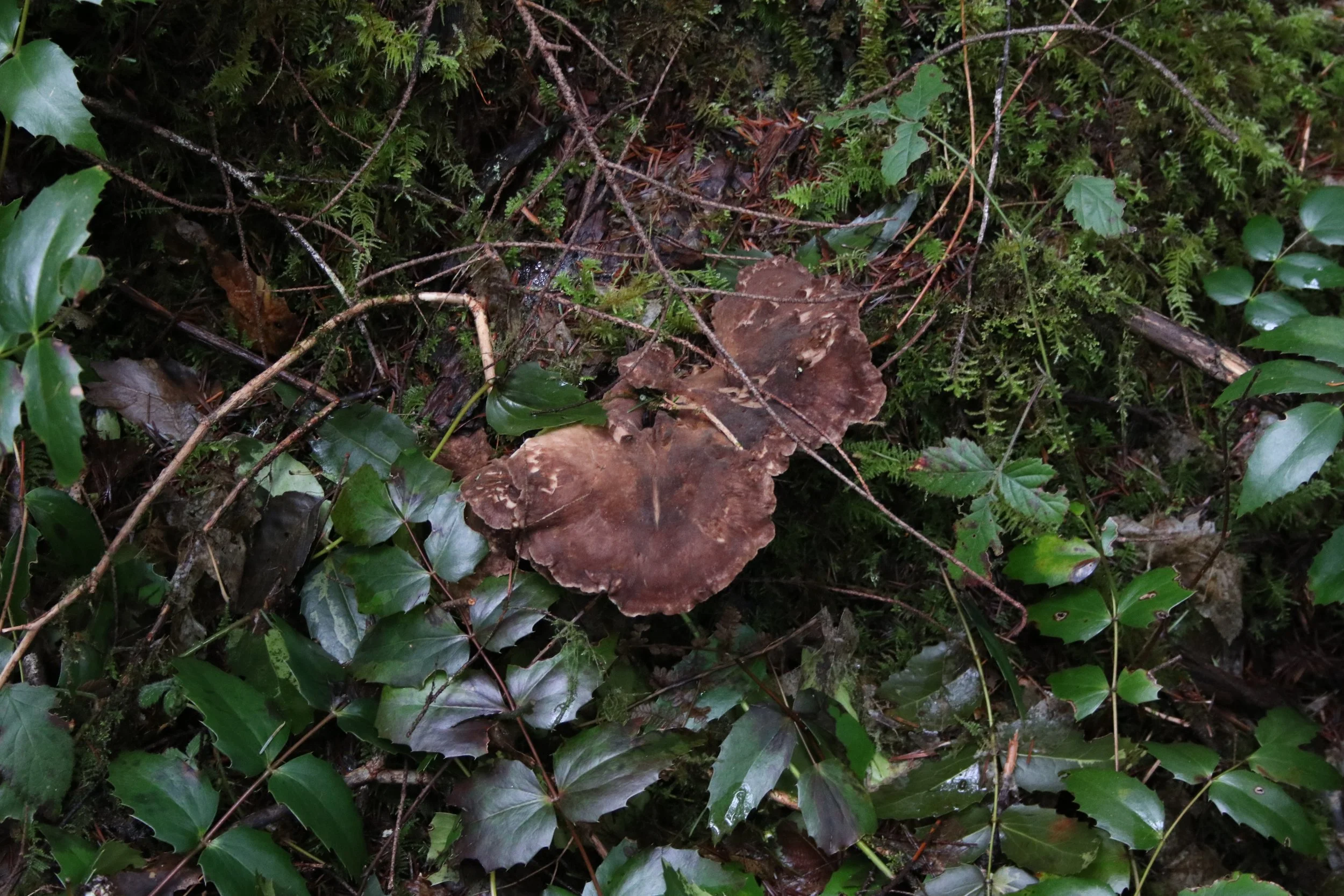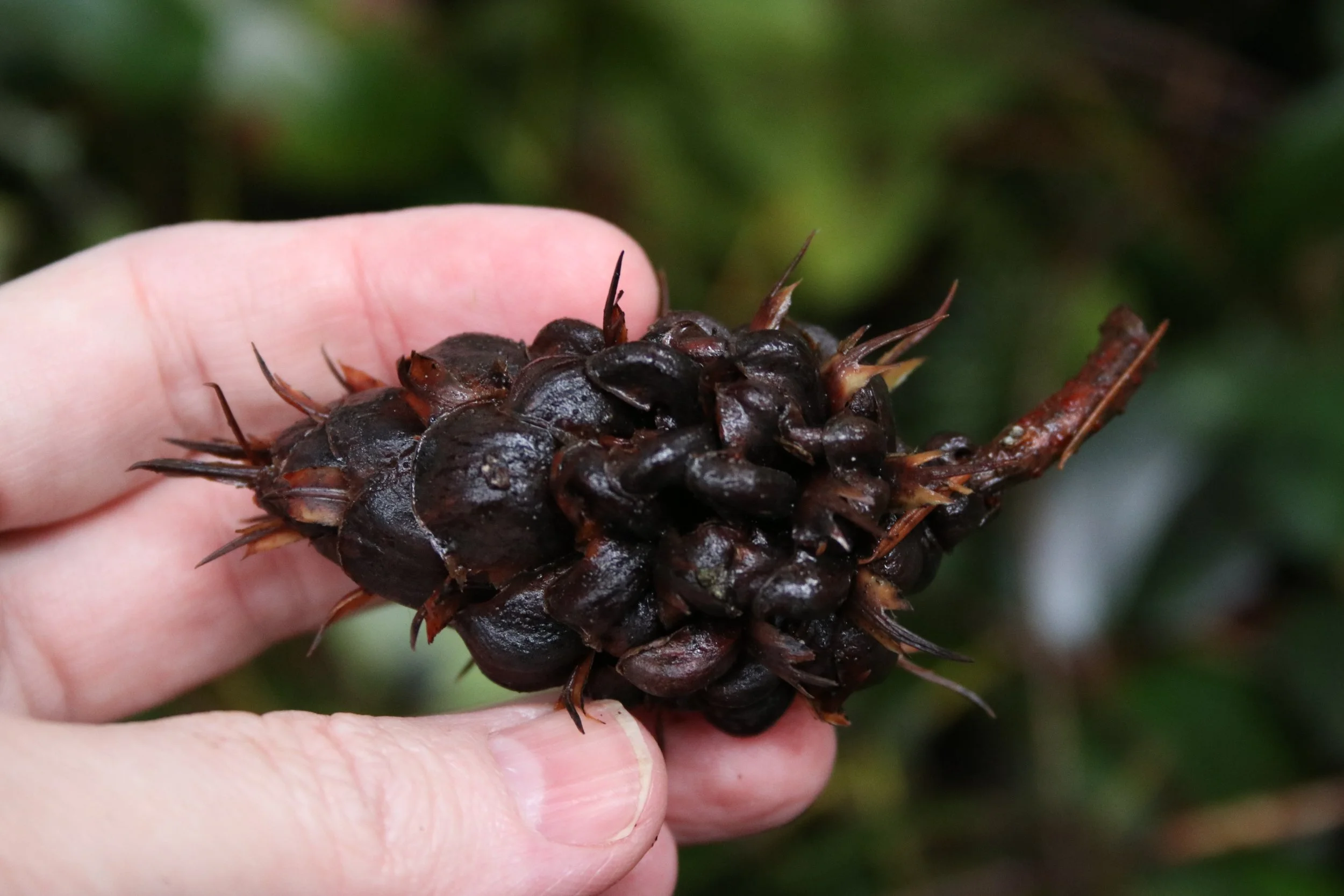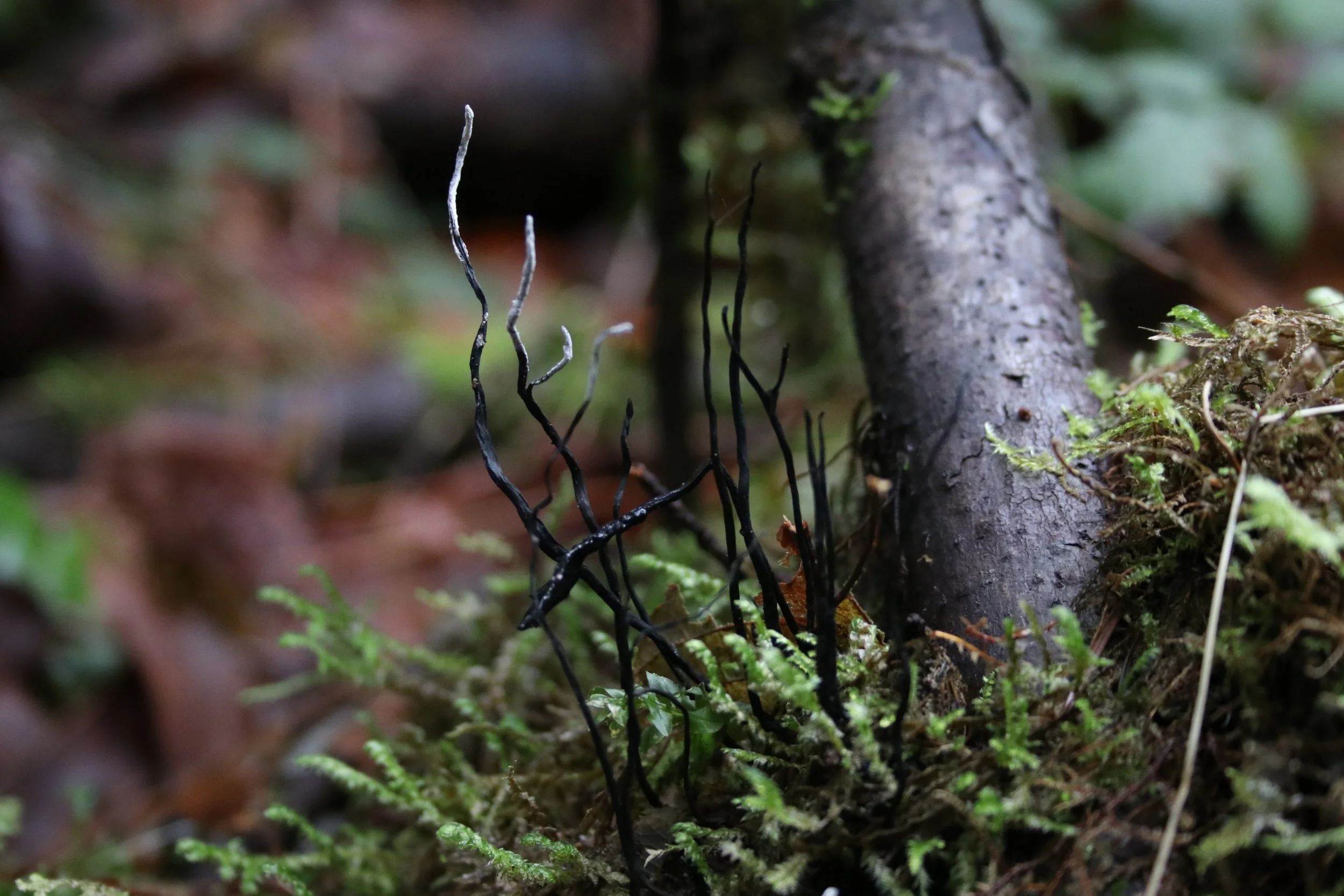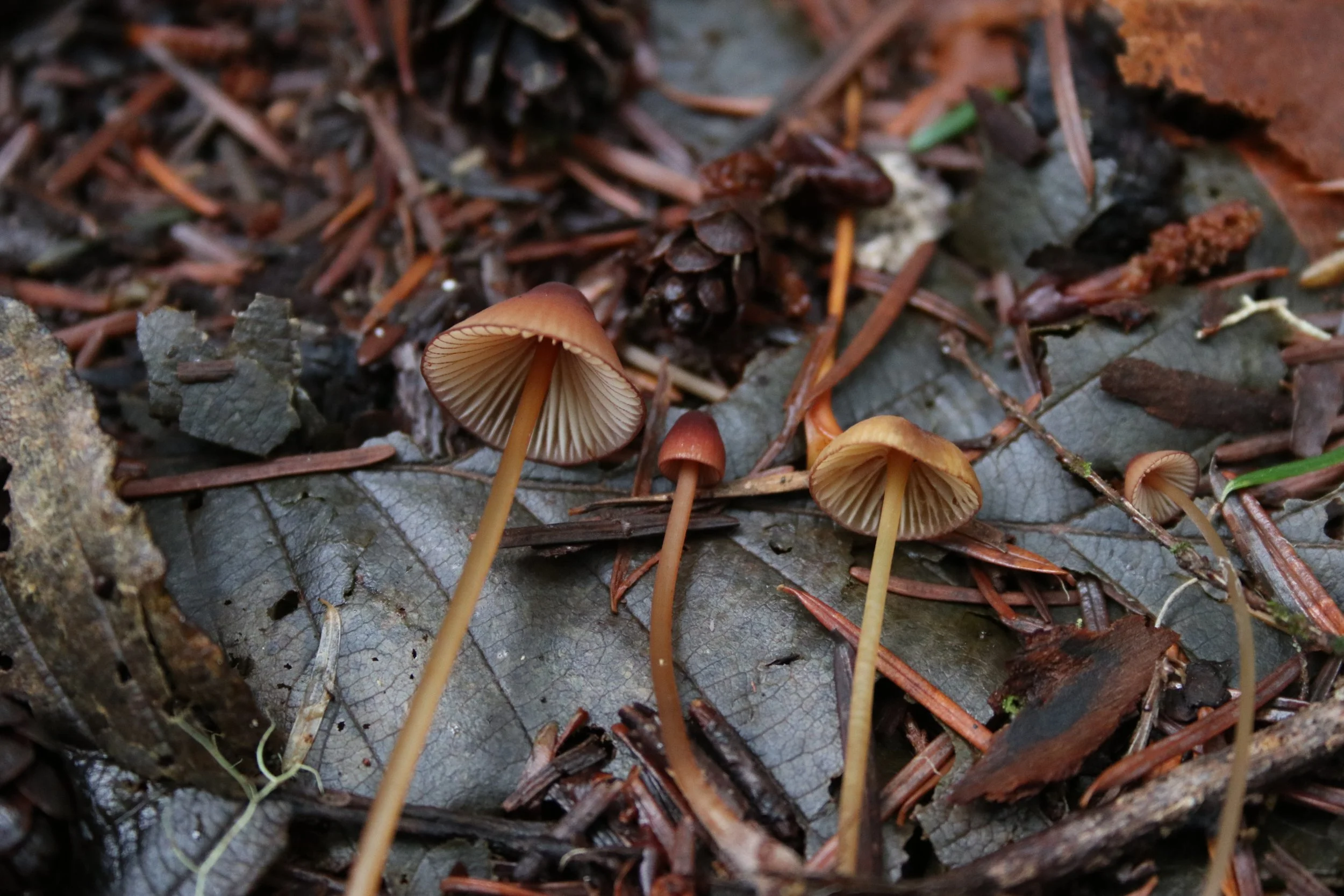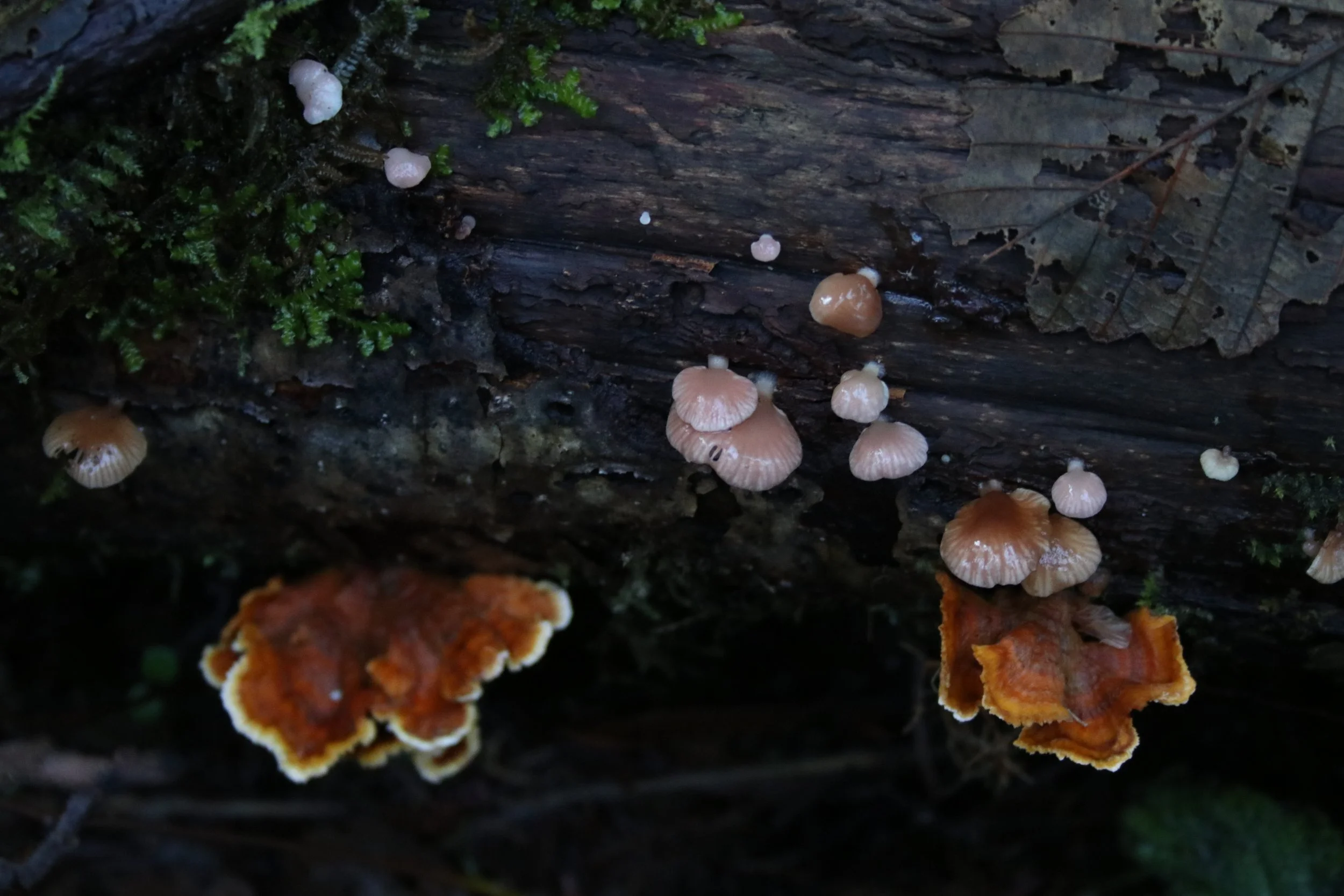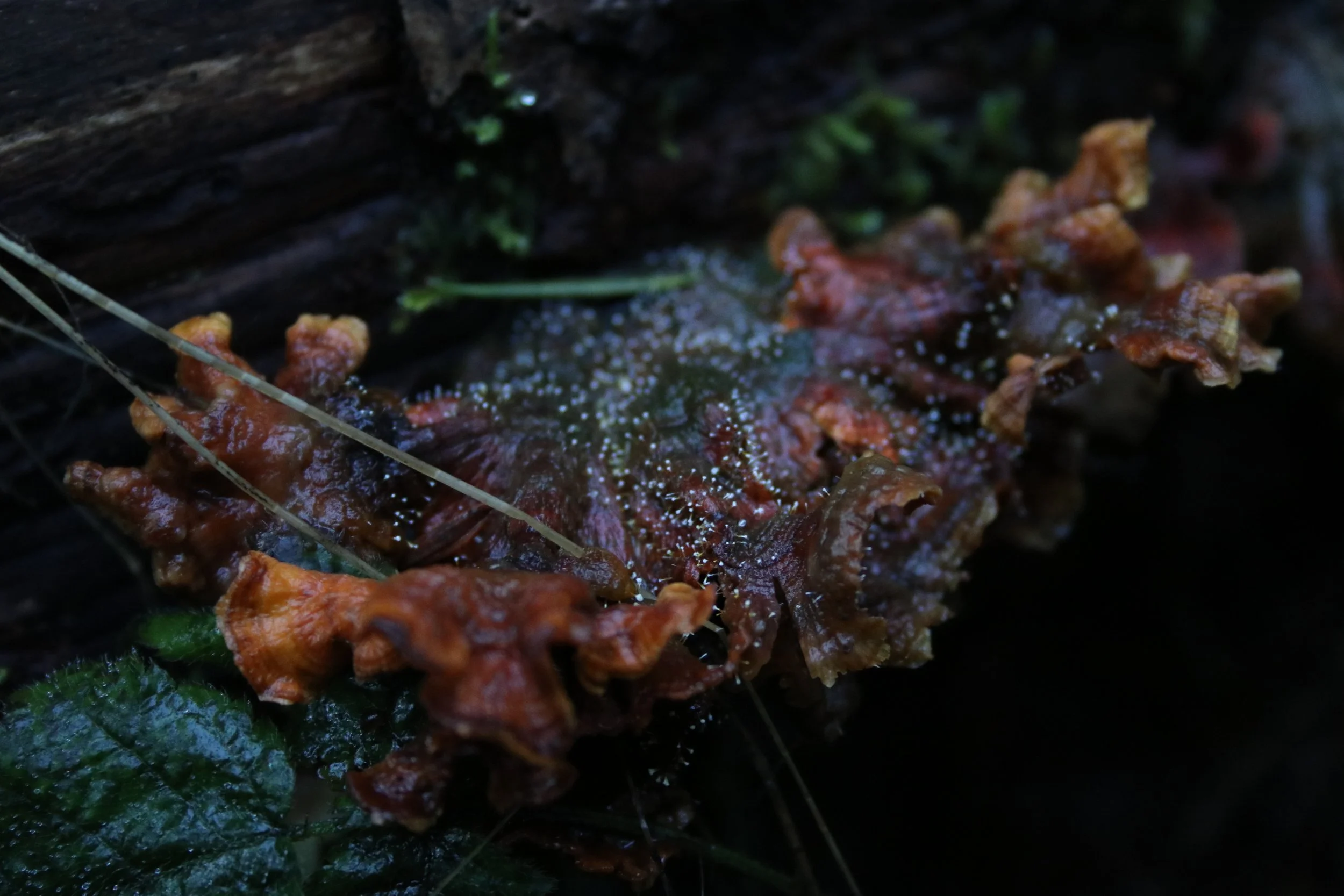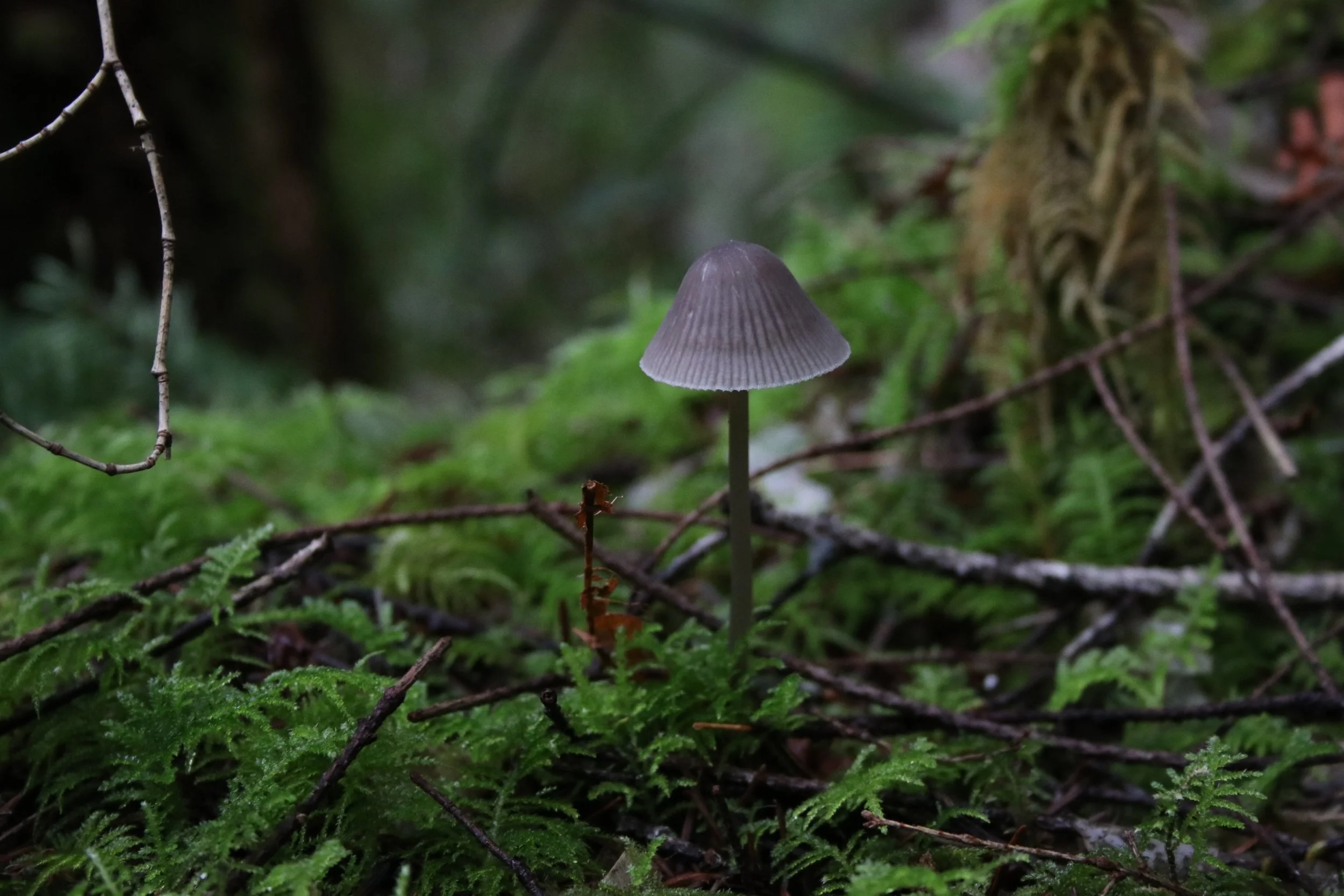Foray Log 122.2022 - Alsea Falls Area
Stereum complicatum
Foray Log- Alsea Falls Area, January 22, 2022
After the whole family recovered from COVID, I wanted to get out and meet with my study group for a late winter foray. I got the group together and we caravanned out to the Alsea Falls area. We were not looking for anything particular, but just wanted to see what was fruiting this time of year. I am always impressed by the diversity of fungi in the coastal range mid winter. It is probably my favorite time to go to the woods because there are hardly any people out and the fungi is so interesting.
As soon as we parked I immediately found the Auriscalpium vulgare, on the side of the road. I called Diana over and showed her my find. We marveled at the way this mushroom camouflages on the forest floor and how it lives on the buried Douglas-fir cone. She swore she would find one on her own this trip.
We walked another few feet and there was a large decaying stump with a beautiful Jahnoporus hirtus fruiting out of the side of it. This mushroom was bigger than my hand and in it’s prime. I tore off a piece of it to confirm my identification. You can really see the angled pores on the abhymenium surface and of course it smelled like bleach.
After observing a few different Mycena, I learned from Diana that some of the Mycena’s will “bleed” when the end of the stipe is pinched off. If it bleeds clear or red, that is a diagnostic feature to help differentiate the species. We found a small grey Mycena and pinched the end off, and sure enough it bled clear.
The Douglas-fir cones on the tree near the Jahnoporus hirtus had some oddly shaped or deformed cones. I am not sure what was going on with it, but all of the cones on the ground were a bit puffy and we barely recognized them as Doug-fir.
We all walked the loop together looking for fungi and moving slow. It was just so nice to be out after being cooped up for so long. We observed some Hypholoma, Lactarius, Cystoderma, and tiny mycenoid type fungi. While collecting the Lactarius, Diana came over to see what Henry and I were looking at, and screamed! We looked over and she had jumped because of the printed spider on my tackle box full of mushrooms, sitting in my basket. That produced fits of laughter and I ended up breaking the Lactarius I was looking at.
Xylaria hypoxylon
We drove down the road and to the spot I had found the Neournula pouchetii two years ago. I have gone back every year looking for this but have never found it. Fungi is so interesting to me because of that. What we see one year, may not produce a fruiting body the next year. The lifecycles of fungi are still something I am trying to learn and research. Although I have recorded almost 300 species of fungi, about 1/3 of them I have only observed once. I think it is so important for community scientists to make observations of what they see and where, because we may never know that it existed in that location. I only observe and record a handful of species that are here in the PNW, but if more people recorded their observations we could help conserve our beloved fungi and their habitat.
We walked up the road at a snails pace and began looking for fungi. I found a speck of a yellow slime mold and showed that off before kneeling on the gravel to get a better look at the red Mycena cluster I found. I pulled the grouping and observed the reddish purple margin and the darker stipes. They had such beautiful reddish orange caps that darkened in the center.
The road curved and Diana found an Inocybe geophylla and we discussed why it looked like the genus Inocybe. We decided the stature, the little umbo on the fibrillose cap and the coloring along with the gill attachment and time of year were what was leading us to that identification. While squatting down to look at it I noticed another Aurscalpium vulgure standing up about 6 inches away from the Inocybe. Diana did not notice it, and I pointed it out. She was shocked that she missed it so close to this mushroom. But it just goes to show that as much as we do notice in the forest or other surroundings, we miss a lot too.
Our mushroom club was reading Finding the Mother Tree, by Suzanne Simard, and so we began talking about the forest connections through the Ectomycorrhizal network, mother trees and the nurse logs. We noticed that the Western Hemlock had dozens of young trees growing on these nurse logs of various ages. We took some time to observe the mycorrhizal connection and discuss this important habitat.
We made one more stop to check on the Tectella that I had found fruiting last year at this time. Jordan had noticed the log it was fruiting on had gone missing, so I wanted to go see if I could find it or another spot this was growing in the Alder patch of woods. I never found it but Henry found an incredible patch of Stereum complicatum growing out of some Alder logs. Near the Stereum were a wonderful flush of stunning pink, white and brown colored fanned fungi with gills and a slimy top. I think these little mushrooms might be Panellus longiquus or something like that.
Along with the fungi we found a nice flush of the Myxomycete, Polycephalomyces tomentosus which looked like little white dots all over the Stereum complicatum. When I got home I took some macro shots of this tiny little world and noticed some clear and milky orbs sitting on top of white and yellow stipes. The life cycle of slime molds can look so different depending on the stage, but it is so incredible to observe up close. Hand-lenses are a must in the woods to see the little things.
We ended the day a drive down the mountain and souls sufficiently fed from our time in nature.
Art of the day
“It’s Complicated” -Digital Photograph by Autumn Anglin


